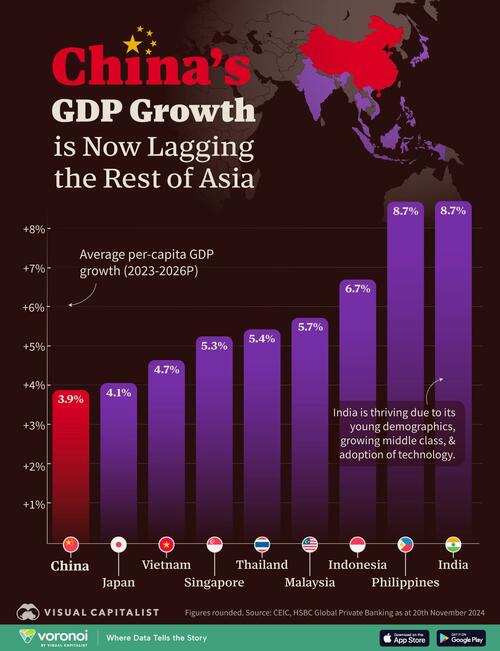
China’s economy is facing a series of significant challenges, including a property crisis and high youth unemployment . After decades of rapid growth, the country is now expected to experience less economic growth than other Asian nations. This graphic, via Visual Capitalist's Bruno Venditti, illustrates the projected growth of per-capita GDP for selected Asian nations between 2023 and 2026, based on data compiled by HSBC as of November 2024.
India and Southeast Asian nations are projected to achieve an average per-capita GDP growth of 6.5% over the 2023–2026 period. Most of these economies are expected to thrive, bolstered by youthful demographics, a rising middle class, strong foreign and domestic private investment flows, and a booming technology sector.

China, however, is forecasted to experience an average per-capita GDP growth of just 3.9%. To address these economic challenges, China’s top leaders have signaled plans for stronger stimulus measures to help fill gaps in consumer demand.
Senior Chinese officials have also indicated plans for increased government spending and further interest rate cuts. The ruling Communist Party faces a “long, long battle” to reflate the economy, according to Robin Xing, chief China economist at Morgan Stanley, who told Bloomberg Television that 2025 will “be the year of trying.” “Maybe by 2026, they will finally find the right dose of policies — a combination of consumption-centric stimulus plus social safety net reform,” Xing added.
If you enjoyed this graphic, make sure check out The G7 is Looking More and More American , that shows the U.S. alone accounts for more than half of the combined G7 output in PPP-adjusted terms.
.















